

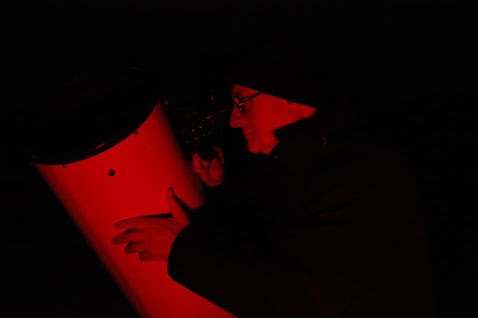

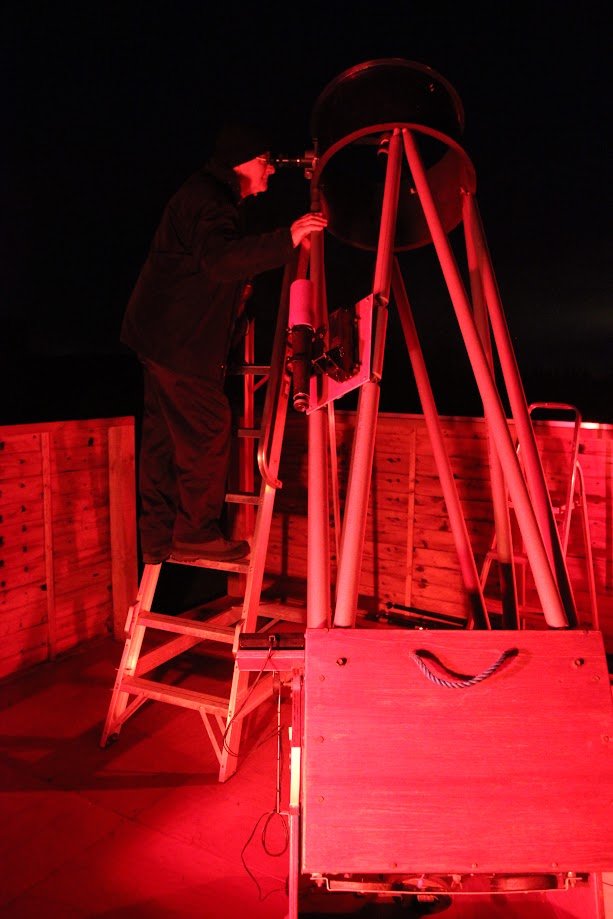

oooo
The dark adaptation timeline
- Now that we’ve covered some of the basics, let’s look at how this process plays out.
o
o
oooo
BSL – First few seconds
First few seconds

ooo
oooo
oooo
oooo
oooo
- After turning off any lights (including smartphones and tablets), your black pupils will quickly widen or enlarge.
o - This is called dilated.
o - They may dilate to a diameter of 7mm if you’re relatively young, but if you’re middle-aged or older they may only be 5mm.
![]()
BSL Version
oooo
oooo
BSL – 3 – 10 minutes minutes
3-10 minutes
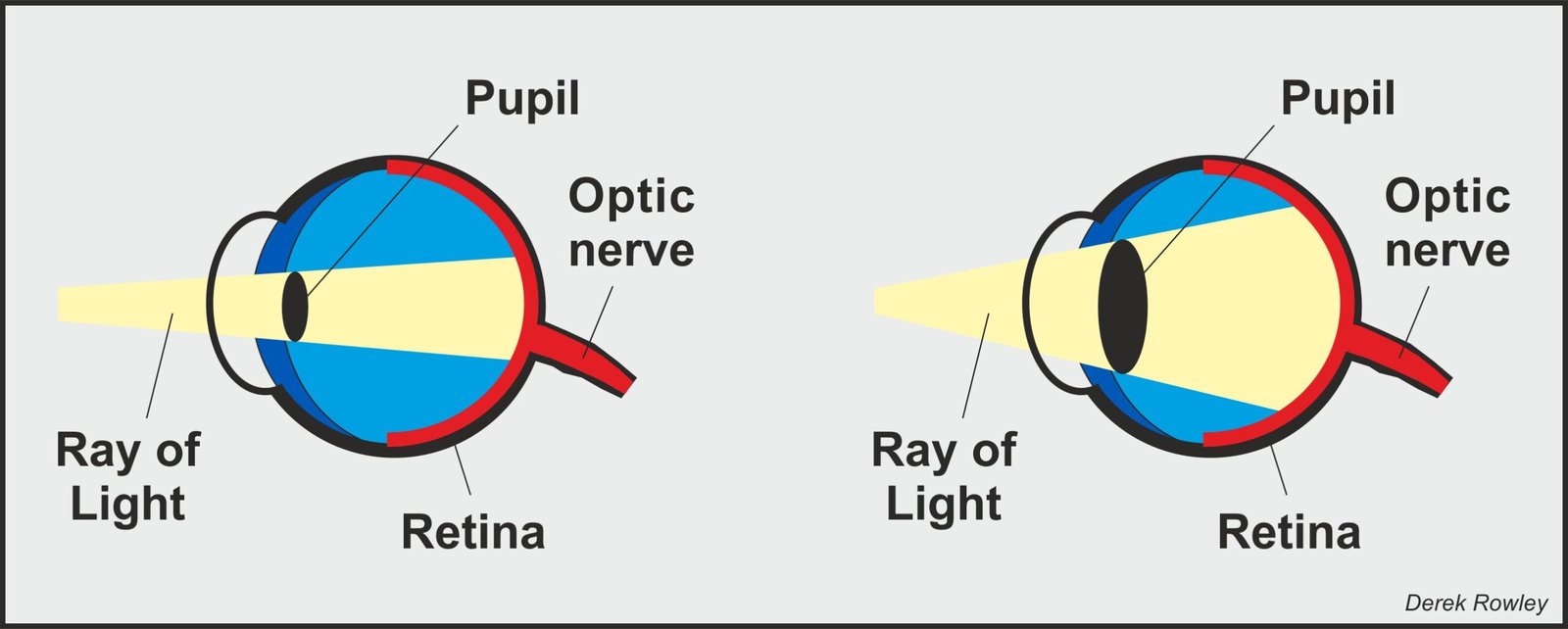
OOOO
oooo
- The Optic nerve (rods and cones) both become more sensitive during the first few minutes.
o - Portion of the retina that can be seen through both undilated & dilated pupils.
o - However, after 3-10 minutes, the cones reach their maximum sensitivity.
o - This is known as the rod-cone break because it’s the point where rods become more sensitive than cones.
o - The rods will continue to become more sensitive over the next few hours as they regenerate a receptor protein called rhodopsin.
![]()
BSL Version
oooo
BSL – 30 minutes
30 minutes
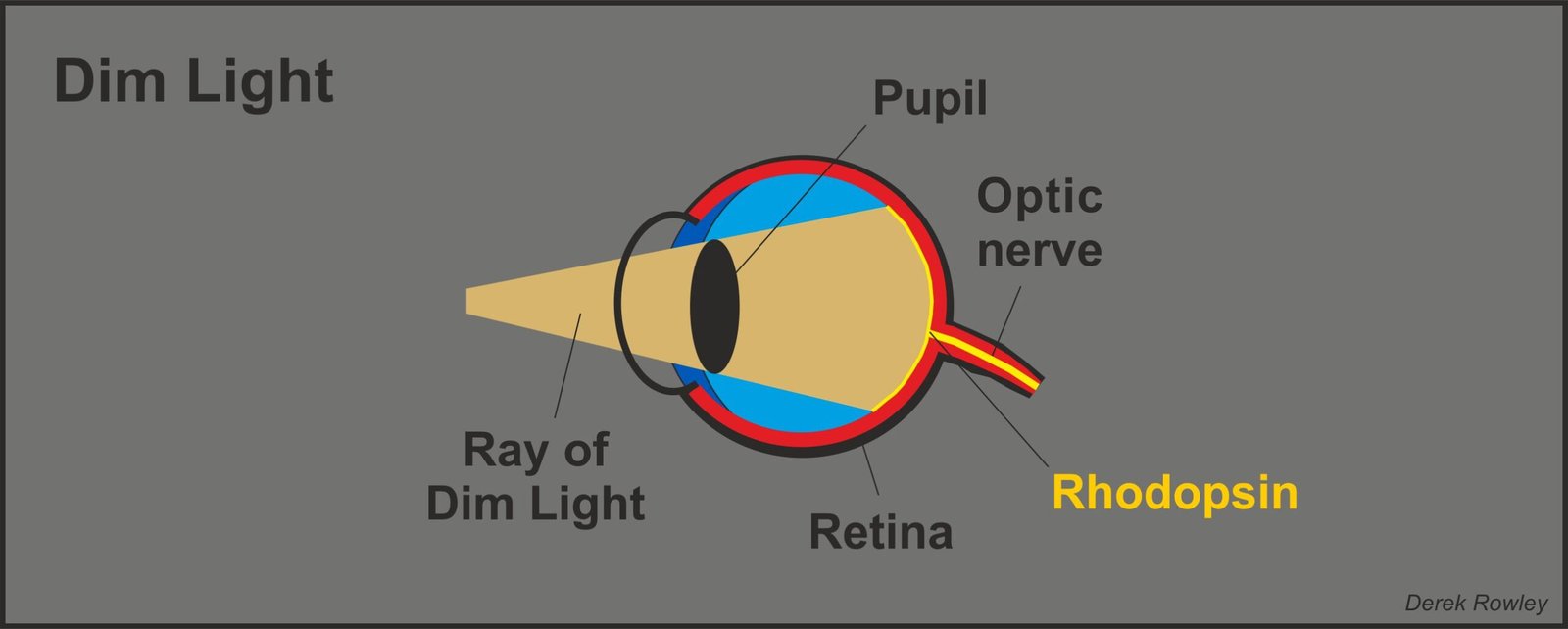
OOOO
oooo
oooo
- It’s difficult to see much improvement beyond this point, and many astronomers consider the 30-minute mark to be the point at which they are well-adapted to the dark.
o - Rhodopsin is what allows the rods in our eyes to absorb photons and perceive light, making it essential to our vision in dim light.
O - At this point, the rhodopsin has mostly been replenished, so you should be seen the ground.
O
O
![]()
BSL Version
oooo
BSL – 3+ hours
3+ hours
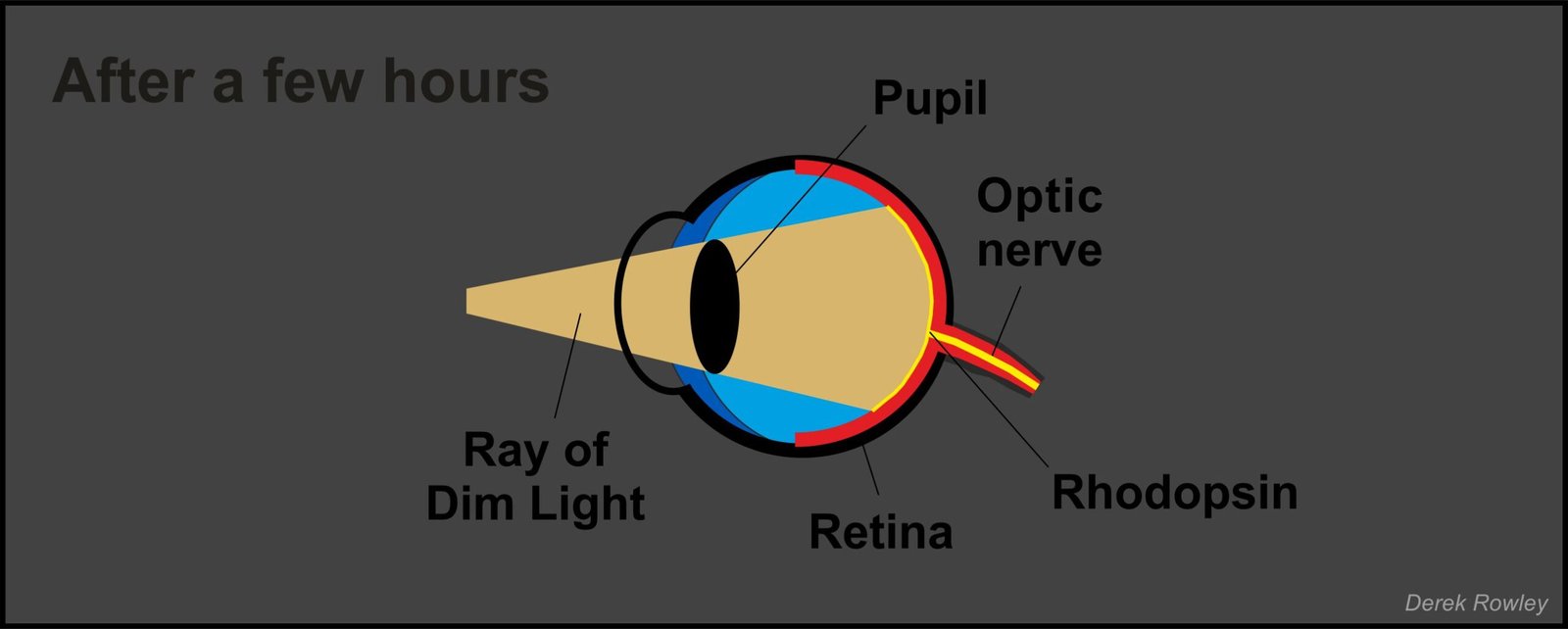
ooooo
oooo
oooo
oooo
oooo
oooo
- After a few hours, your dark adaptation may even go beyond the 90% mark.
O - This can be hard to do, as it requires a very dark site with essentially no artificial light.
O
O
![]()
BSL Version
oooo
BSL – Why do astronomers use red dim light torch?
Why do astronomers use red dim light torch?
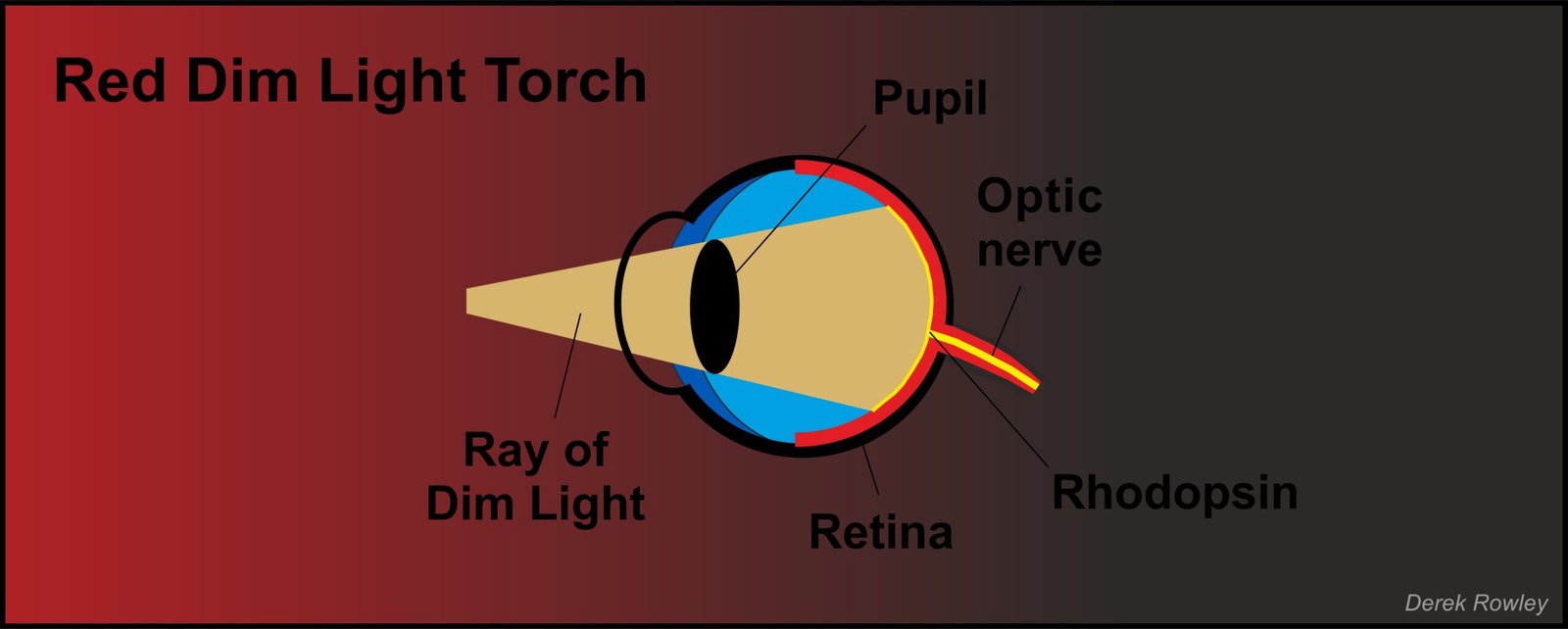
OO
oooo
oooo
oooo
- It is an interesting trait that red dim lights do not trigger the neutralisation of the rhodopsin, so astronomers and safety officials use red dim lights for night lighting to allow night vision to continue.
o - To help you see in the dark and won’t spoil your night vision.
o - LED Head torches have a red-light setting down, which is less disruptive to night vision and gentler on the eyes ~ ideal for both astronomy and BSL communication.
o
![]()
BSL Version
OO
BSL – What if any white lights interrupt?
What if any white lights interrupt?

ooooo
ooooo
ooooo
oooo
oooo
oooo
oooo
- Light exposure affects cones and the inner retina through photon absorption by rhodopsin.
O - Exposure to high levels of white light caused severe retinal degeneration your visibility.
O
O
![]()
BSL Version
oooo
English Version>>BSL –
BSL – What is the red dim light torch for astronomy?
What is the red dim light torch for astronomy?

oooo
oooo
oooo
oooo
oooo
oooo
oooo
oooo
oooo
- It is a great lighting source for particular tasks such as astronomy map reading, logging, writing or planning notes.
o
oooo
oooo
oooo
oooo
oooo
![]()
BSL Version
oooo
oooo
oooo
Return to
- BSL – First few seconds
- BSL – 3 – 10 minutes minutes
- BSL – 30 minutes
- BSL – 3+ hours
- BSL – Why do astronomers use red dim light torch?
- BSL – What if any white lights interrupt?
- BSL – What is the red dim light torch for astronomy?
OOOO
Go to other pages:
oooo
Newcomers
…….– ![]() How can I start in astronomy?
How can I start in astronomy?
…….– ![]() Getting to know the night sky.
Getting to know the night sky.
…….– ![]() Preparing for your night observing.
Preparing for your night observing.
o
Your First Night Sky (beginners)
…….– ![]() Recommend to be first recognisable pattern in your night sky – The Plough.
Recommend to be first recognisable pattern in your night sky – The Plough.
…….– ![]() How to find True North without a compass?
How to find True North without a compass?
…….– ![]() Recognising Pattens by the brightest stars.
Recognising Pattens by the brightest stars.
o
Derekscope’s Basic Information
…….– ![]() In viewing between methods – Naked-Eye/Binoculars/Telescopes
In viewing between methods – Naked-Eye/Binoculars/Telescopes
…….– ![]() Choosing which binocular to buy?
Choosing which binocular to buy?
…….– ![]() Choosing which telescope to buy?
Choosing which telescope to buy?
…….– ![]() Types of telescopes (Refractor / Reflector / Cassegrains)
Types of telescopes (Refractor / Reflector / Cassegrains)
…….– ![]() Before you buy eyepieces.
Before you buy eyepieces.
…….– ![]() How to read a telescope magnification?
How to read a telescope magnification?
o
Derekscope’s Observing the Deep Sky
…….– ![]() Dark Adaptation, your eyes need!
Dark Adaptation, your eyes need!
o
oooo
Back to homepage: